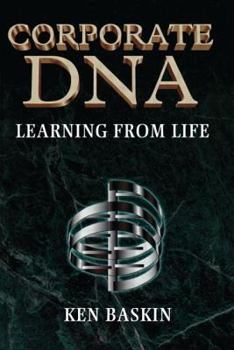Corporate DNA
Corporate DNA explores what happens when managers think about and run their companies as if they were living things. An organic model is at the heart of the transformation of companies like AT&T and EDS, working to redesign the bureaucracies that they were built upon. This book addresses the frustrations felt among corporations by focusing on the role of the organizational models in the transformation process. The book's key perception is that the choice of a mechanical or organic model results in an organizations developing either mechanical or organic structures. Those structures, in turn, lead to certain types of behavior. Corporate DNA provides tools with which managers can replace their old mechanical models with organic ones. Readers will discover how living things use information to create work; how they learn, develop, and govern themselves; and how prototype organic corporations such as 3M and Federal Express apply organic models to their operations. Ken Baskin, Ph.D., is a consultant on communicating quality and culture change. In addition to his own public relations business, he has worked for the US Department of Energy, the New Jersey Department of Education, and Bell Atlantic, including speech writing for CEO Ray Smith. Ken leads workshops on ]Creating Competitive Advantage in a Market Ecology] and ]Using the Principles of DNA for Problem Solving, ] among others.
Format:Paperback
Language:English
ISBN:0750698446
ISBN13:9780750698443
Release Date:June 1998
Publisher:Routledge
Length:240 Pages
Weight:0.75 lbs.
Dimensions:9.2" x 0.6" x 6.1"
Customer Reviews
1 rating
Rules for business success in a complex 'business ecology'
Published by Thriftbooks.com User , 25 years ago
Goes beyond simply advocating that organisations should be thought of as living organisms, to work through the implications and challenges of this perspective in some detail. In particular, it takes the concept of a 'business ecology' (see eg. Moore: 'The Death of Competition') to develop rules for success in a world of 'punctuated equilibrium' - periods of relative stability followed by chaotic periods due to a destabilising invader or event, from which a newly shaped ecology emerges, with different dominant species.While this is a highly simplified view of the formation of natural ecologies (and of the underlying complexity theory), it is still useful in looking at dynamic markets. Part 1 looks at market ecologies. The framework is a generalisation of themes that recur in many other contexts. The idea of moving to preempt or build dominance in emergent market ecologies lies at the base of Hamel and Prahalad's strategy ('Competing for the Future'). Ormerod in "The Death of Economics' proposes that economies operate to precisely the same rule of punctuated equilibrium. Baskin goes on to draw out rules for business success in market ecologies.Part 2 takes the same analogy inside the corporation, looking at the building of identity, the flow of information and development of the 'corporate nervous system', the issue of organic community structures and finally the role of senior managers, while Part 3 makes the distinction between change and transformation and highlights the differences.






